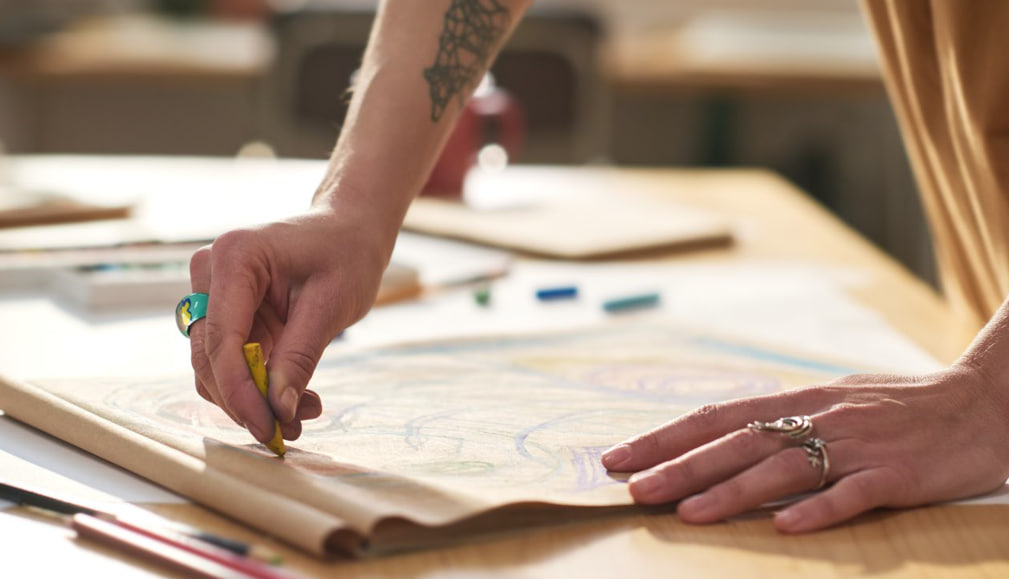Character design is at the heart of any comic book, as it directly influences how readers connect with the story. A well-designed character isn’t just a visual representation—it’s a reflection of their personality, their motivations, and their role in the narrative. Whether you’re designing superheroes, villains, or everyday protagonists, character design plays a significant role in the storytelling process. Here’s how to create memorable and dynamic characters for your comic book.
1. Establishing Personality Through Visual Cues
The first step in character design is making sure that the character’s appearance aligns with their personality. Visual elements such as facial expressions, posture, and clothing help convey a character’s internal world to the audience. For example, a heroic character may stand tall with confident body language, while a villain could be designed with sharp angles and dark colors to convey danger or malice.
Details such as scars, tattoos, or unique hairstyles can add further depth, telling a story of their own. Even the color palette you choose for your character’s clothing and skin tone can reveal their traits. For instance, a character dressed in bright colors may be outgoing and optimistic, while darker tones could suggest mystery or a troubled past.
2. Developing Character Silhouettes
A key element of strong character design is a distinctive silhouette. A strong silhouette makes the character immediately recognizable, even from a distance or in a single outline. Great comic book characters often have unique and memorable silhouettes that reflect their personality and powers. Think of Spider-Man’s iconic web-slinging pose or Batman’s broad, imposing shoulders.
When designing characters, it’s important to ensure that their silhouettes are visually distinct from one another, especially if there are multiple main characters. This allows readers to easily identify who’s who, even when they appear in motion or under chaotic circumstances.
3. Creating Dynamic Costumes and Props
A character’s costume is often the first thing readers notice, but it’s also an extension of who they are. A well-designed costume can showcase a character’s values, their backstory, and even hint at their abilities or limitations. For instance, a character’s armor may reflect their warrior mentality or past battles, while a magical character may wear robes or accessories that emphasize their mystical powers.
Props are also an essential part of character design. Whether it’s a weapon, a piece of technology, or a personal memento, props help to define a character’s role and abilities within the story. For instance, Thor’s hammer, Mjolnir, not only looks cool but speaks to his identity and powers.
4. Emphasizing Expression and Emotion
Characters in comics need to express a wide range of emotions to make them relatable and engaging. Facial expressions and body language are essential tools for conveying emotions in comics. Whether it’s anger, joy, sadness, or confusion, a character’s face should reflect these emotions clearly. The way a character moves—whether they slouch, stand tall, or gesture emphatically—should also mirror their emotional state.
In action scenes, how a character reacts to situations (through visual cues) can tell the reader a lot about their personality. A fearless character might charge into danger, while a more cautious one might hesitate or plan a strategic retreat. These emotional cues enhance character depth and make them feel more authentic.
5. Consistency in Design Across Pages
While it’s important to create a dynamic and evolving character, consistency in design is equally crucial. Readers need to recognize the character no matter how many pages have passed. Ensure that key features of the character—such as their facial structure, body type, and color scheme—remain consistent throughout the comic.
You don’t have to make every single pose identical, but the character should maintain a recognizable form even in different angles or positions. This consistency allows readers to easily follow the character’s actions and maintain immersion in the story.
Conclusion
Character design is an essential aspect of comic book creation, as it shapes the way readers perceive and connect with the story. By focusing on visual cues, dynamic silhouettes, emotional expression, and consistency, you can create characters that are both memorable and engaging. Whether your characters are heroes, villains, or somewhere in between, the right design can elevate your comic and make it unforgettable for your audience.

